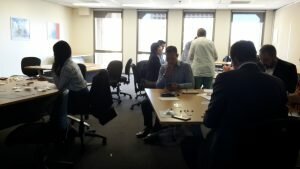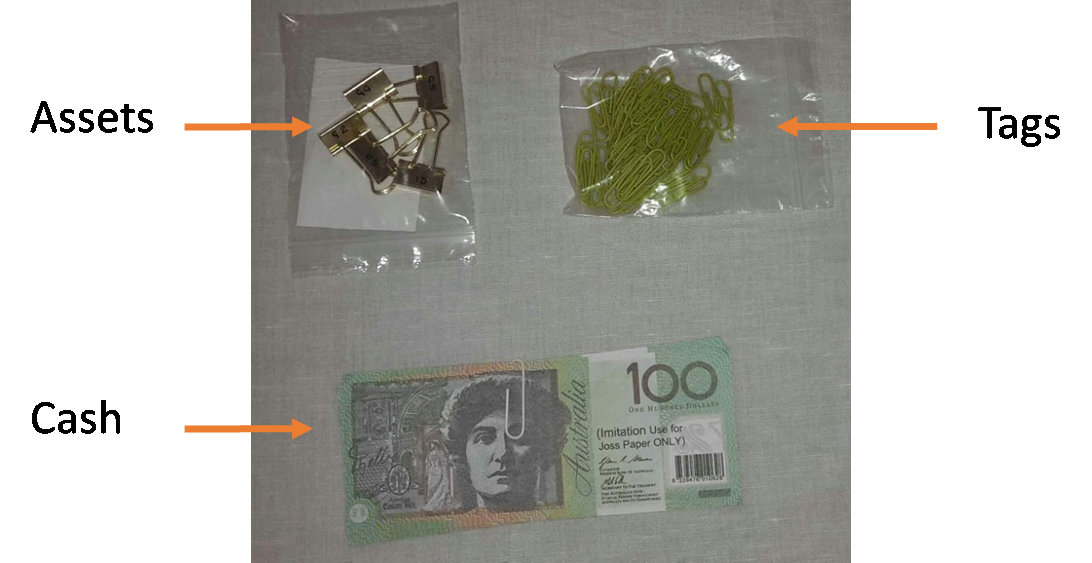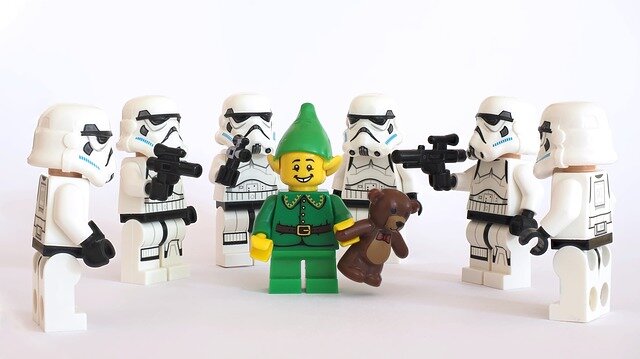For everyone who’s always wanted but was always literally terrified to ask – we bring you the Blockchain Game, developed as an output for the . The CREDIT project is led by CoDE’s Professor Roger Maull, and features CoDE co-investigators Dr David Plans and Dr Phil Godsiff.
Why a game? Because one of the basic problems with blockchains is how challenging it is for managers to understand the underlying concepts. Mistaken ideas include:
- The only use is through Bitcoin;
- You have to understand complex cryptology, and;
- It is mainly used to .
Turning blockchain into a simple, easy-to-use game gives businesses access to the underlying ideas of the blockchain and its applicability to asset management and bitcoin usage in a practical, kinesthetic and low- tech way (using paper clips and fold-back clips). The game enables businesses to identify potential applications for blockchain both for existing business, and for innovations on business models.
The team reports, ‘We ran the game three times recently with business groups. Participants who had been to many blockchain presentations said it was by far the best explanation of blockchains they had received, and that the game made blockchain “come alive” ’.
Are you brave enough to play?

The Blockchain Game
Optimum number of players: 25.
Arrange players in groups of 4-5 per table; 5 is optimal.
Each player is assigned a different coloured paper clip (tags), and needs 50 paper clips of the same colour; 5 fold back clips to represent assets; and 25 different fold-back clips to represent bitcoin. Each person (in round 1) needs £1000 in fake currency.
Round 1 Trading Assets
Each player has a trading aim, 5 clips representing assets, 50 tags to mark ownership, and £1000 to trade assets.
Each player needs to keep their trading aims private. The trading aims are designed to encourage trading, and therefore to produce blockchains attached to each asset. Each player marks the assets with their own coloured tag. Each player trades assets for cash. When an asset changes ownership the new owner adds their coloured tag to the chain, thus developing a chain of tags or blocks. A round should be limited to 5 minutes. At the end of the round it is important to take a photograph of each of the blockchains and to post them onto the Internet. This represents the digitisation of the block chain.
Summary
The chain of tags represents the provenance of the asset and the last tag shows who owns it. This is ‘guaranteed’ by having multiple copies of a photograph that becomes difficult to fake (i.e. photo shopping thousands of photographs would be too time-consuming).
The assets represent individual assets such as a house, scotch whisky, or diamonds. Through establishing provenance, there is the potential to increase the value of the asset, for example scotch whisky — although of course there can be complications: establishing the provenance of a is possible, but establishing the provenance of a blended whisky is much more difficult.
Rounds 2-4
Building on the basic foundation of how blockchain functions, the next rounds of the game go on to explore:
- The role of Bitcoin and its impact on the banking industry ( each transaction is now peer-to-peer and BitCoin transactions no longer need to be cleared through a bank, which massively reduces transaction fees);
- ‘Mining’ and different types of blockchain governance;
- Taxation, legal jurisdiction, and the international trade; and
- The implications of blockchain for economic activity (which might include placing assets on the block chain, or how digital currencies might transform business models).
Blockchain is , across the digital economy – do you know how it’s affecting your business now? The CREDIT team is eager to see the Blockchain Game widely used, so get in touch for more information!






